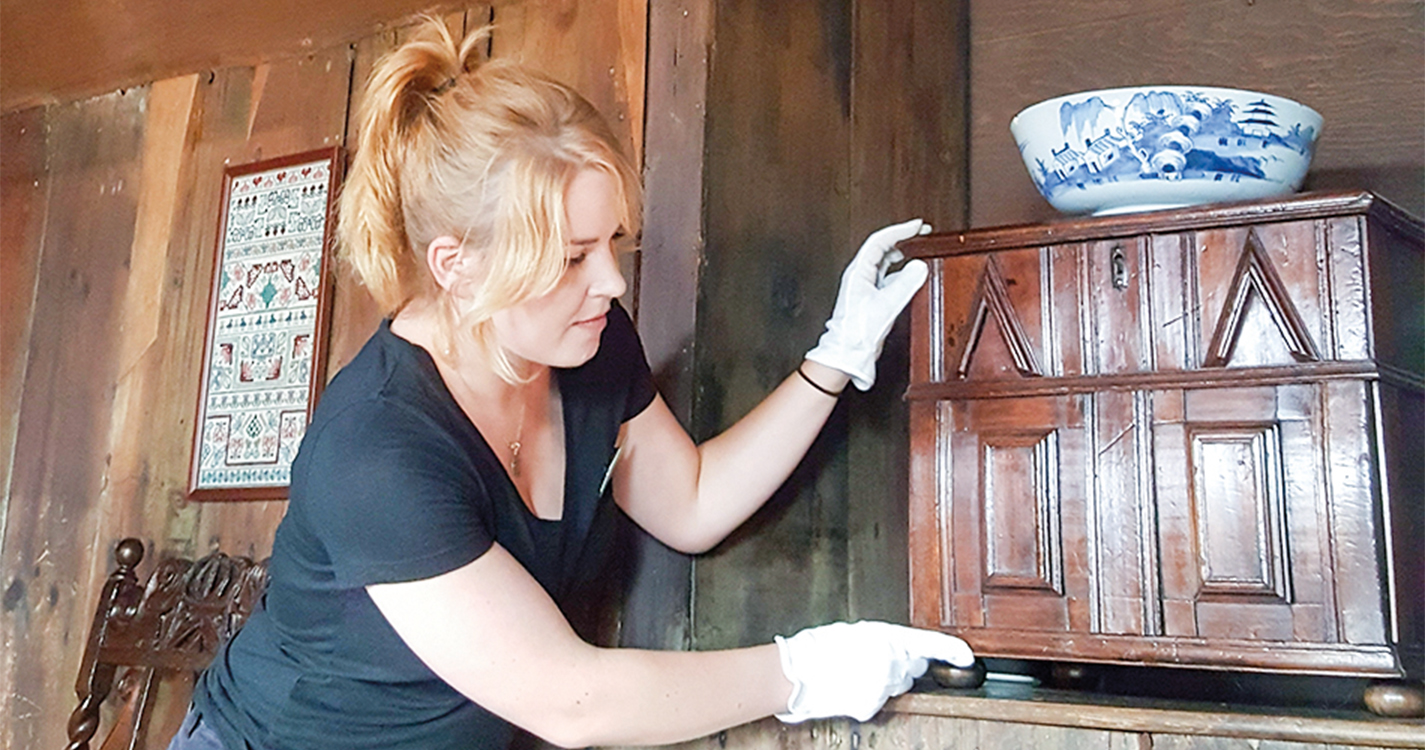Surrounded by treasures on Scotland’s coast, Michelle Atherton ’15 is documenting history — and making it in the process.
She’s part of a team sprawled throughout the country with one goal: To photograph and catalog at least 100,000 valuables stashed in castles, palaces and homes. Atherton, who’s developing her career as a curator, says, “It’s unlikely that I’ll ever see a project of its size and scope again.”
For the first time, the country’s biggest conservation charity — the National Trust for Scotland — is creating a comprehensive inventory of the historic artifacts in its collection, valued at over $500 million. Eventually, the charity wants to enter the full collection into an online database accessible to researchers and the public worldwide.
Atherton is one of 26 members chosen for the 18-month Project Reveal. Her team is cataloging works situated in “ballrooms and basements” at 11 properties near Edinburgh. Collections span paintings, furniture, textiles and even taxidermy.
Atherton gained valuable experience in such work while an art history major at Willamette. She spent one summer in Italy completing osteology field work for an archaeology project, and she interned and worked at the Hallie Ford Museum of Art, where she learned how to move artwork, catalog new accessions and use a collections database — “the exact skills I’m using in my new job,” she says.
After graduating from Willamette, Atherton moved to Edinburgh to pursue her art history master’s degree. While earning her degree, she cataloged “bizarre, fascinating and graphic” medical instruments for one of the oldest museums in the country and curated a display for a major art gallery. Her work afforded a strong network of professional connections that led to the National Trust for Scotland opportunity.
On her first day on Project Reveal, her team visited the Georgian House, an 18th-century home filled with pianos, dining room sets and a cellar holding at least 300 wine bottles. Next stop was Newhailes, a large country estate on the coast, where every inch of the Rococo-style interior — from the door frames to the furniture — is covered in shell motifs and a polar bear skin rug sprawls across a library floor. Hidden within the library, a smaller room containing hundreds of pieces of fragile china presented a big challenge for Atherton’s team to document.
One morning, she wandered the woods near the 17th-century estate and discovered an aging shell grotto formerly surrounded by water gardens.
“That’s the nature of the project — stumbling across something amazing that you didn’t know was there,” she says. “I’m most excited about the unknown!”
Atherton notes the project will “have outcomes that enhance Scottish heritage for years to come.” After the National Trust for Scotland creates the database, the charity can move forward with conservation and new exhibitions that share its treasure trove with the public.
The sheer scope of Project Reveal and the vast reach of the conservation charity — from castles to the Scottish countryside — is the very reason Atherton wanted to work for it in the first place.
She says, “I’m grateful for the feeling that I’m part of something much larger than myself.”
This article was originally published in the fall 2017 issue of Willamette magazine.

